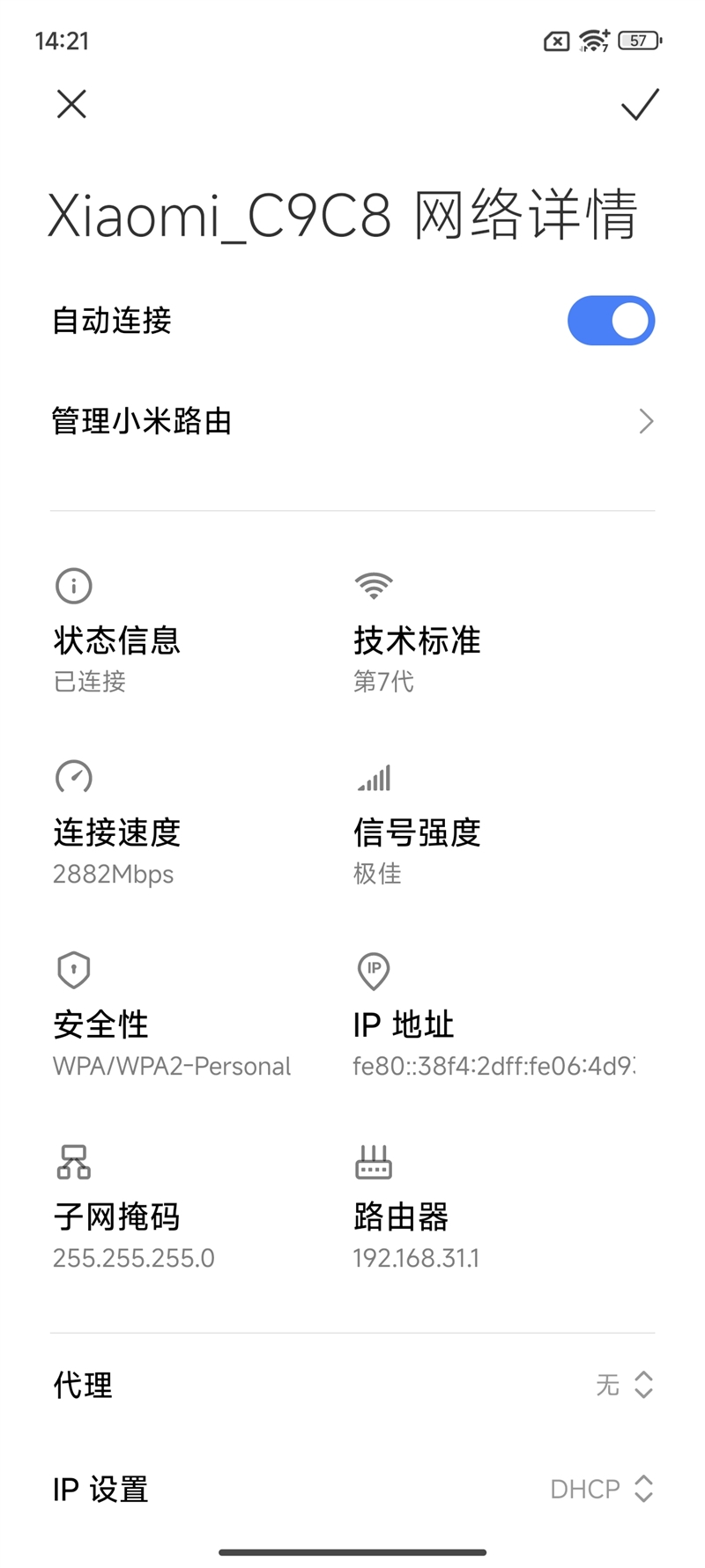Major mobile and desktop manufacturers released commercial solutions for Wi-Fi 7. Consumers had high expectations for Wi-Fi 7, and recently launched devices like mobile phones, laptops, and motherboards support Wi-Fi 7, gaining rapid popularity. The decision to purchase equipment is now influenced by its Wi-Fi 7 compatibility. Known for cost-effective products, three routers—Xiaomi 10G Router, BE7000, and BE6500 Pro—support Wi-Fi 7. However, their prices, ranging from 699 to 1599 yuan, may not be suitable for entry-level users. Now, Xiaomi has introduced its most affordable Wi-Fi 7 router, the Xiaomi Router BE3600, priced at just 200 yuan. This move aims to let more consumers experience the new Wi-Fi 7 technology.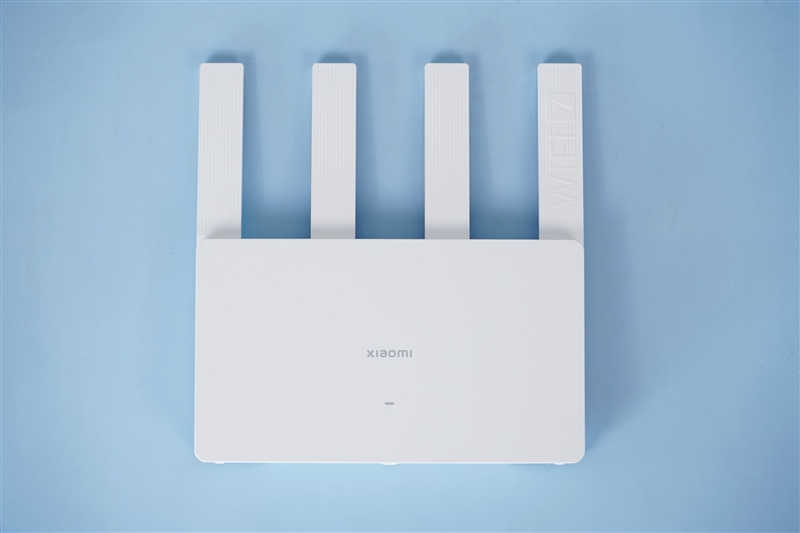
Firstly, it enhances bandwidth, doubling channel bandwidth from 160MHz to 320MHz and increasing QAM from 1024 to 4096. This leads to a 120% increase in simultaneous data transmission.
Theoretically, Wi-Fi 7’s transmission rate can reach 46Gbps at full capacity, a 4.8 times increase compared to Wi-Fi 6E’s 9.6Gbps. However, full support for the 6GHz frequency band is yet to be clarified.
Secondly, Wi-Fi 7 introduces CMU-MIMO technology, supporting up to 16 data streams, doubling the transmission rate, and reducing delays caused by channel congestion.
The third point highlights MLO multi-link aggregation technology, allowing connection to multiple Wi-Fi hotspots simultaneously for improved throughput performance and peak speed.
The fourth point introduces Multi-RU high-end allocation technology, enhancing OFDMA and improving transmission efficiency and stability for multiple users accessing the Internet.
Moving on to specifications, despite its 200 yuan price, the Xiaomi Router BE3600 boasts configurations not inferior to higher-priced routers. It features a Qualcomm IPQ5312 quad-core A53 architecture processor, 256MB of memory, and a 2.5G wired network port.
On the wireless side, Xiaomi Router BE3600 provides a theoretical wireless rate of 3600 megabits, including 2882Mbps on the 5GHz band and 688Mbps on the 2.4GHz band. The router’s performance, compared to its cost, is worth exploring further.
Design and Appearance
Xiaomi Router BE3600 embodies a “white and cool” style, featuring a flat body and four fixed antennas. These antennas, coupled with four internal independent signal amplifiers, empower the router with robust wall penetration capabilities.
Measuring 290.98×40.95×219.83mm, it boasts a compact and sleek design. An LED indicator below the Xiaomi logo on the front communicates different statuses through varied colors.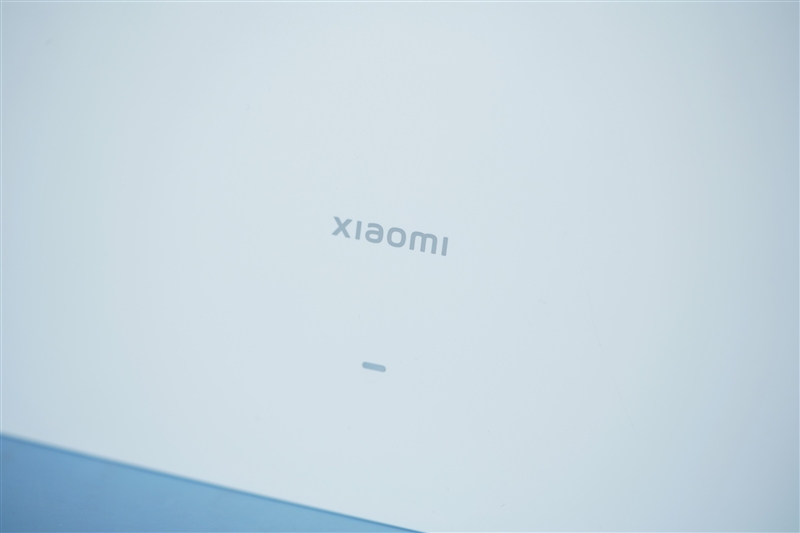
The fourth antenna discreetly bears the words WiFi 7. Meanwhile, the router’s back adopts a transparent large-area hollow design, ensuring efficient heat dissipation.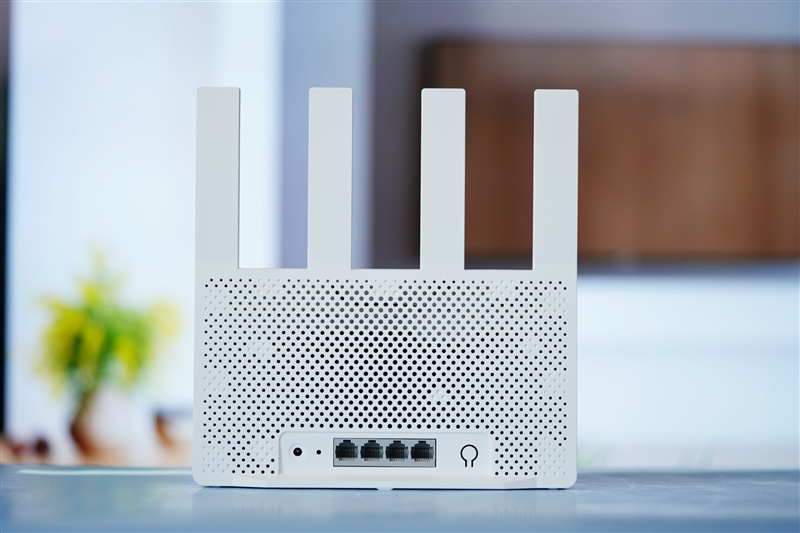
Moving from left to right on the back, there are the power socket, RESET button, 4 adaptive WLAN/LAN ports, and MESH button. Notably, the first to third ports support 10/100/1000Mbps adaptive WAN/LAN, while the fourth offers 10/100/1000/2500Mbps adaptive WAN/LAN with bandwidth aggregation functionality.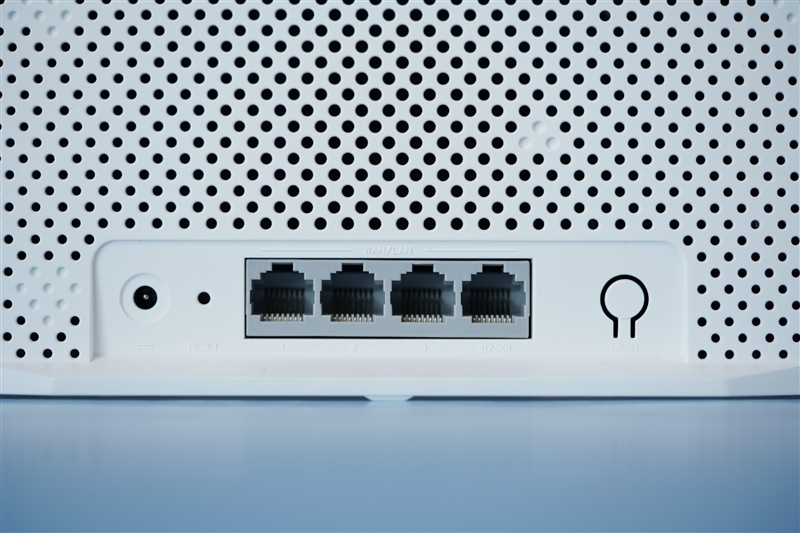
It’s worth highlighting the Xiaomi router BE3600’s compatibility with Xiaomi/Redmi Wi-Fi 6 routers, facilitating hybrid Mesh networking. Supporting up to 10 wireless interconnections, it effortlessly establishes star/chain/wired and wireless hybrid networks, ensuring efficient link self-healing and switchovers. This guarantees a network experience free from signal dead spots.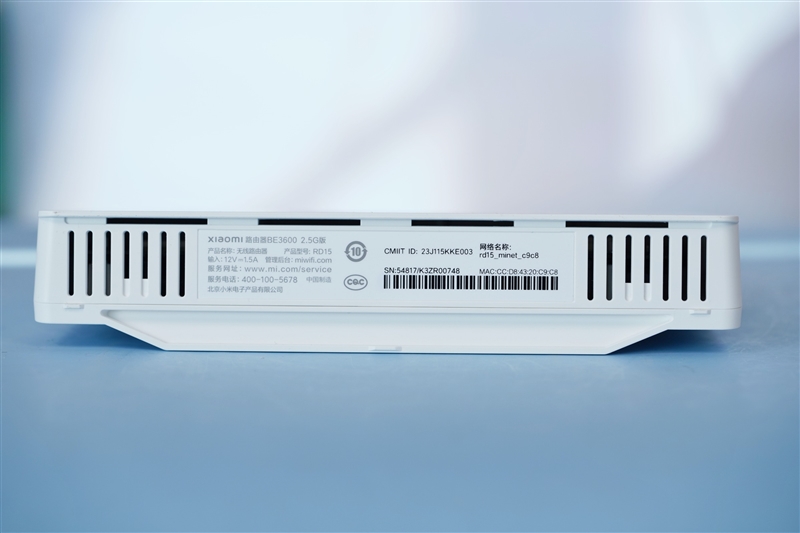
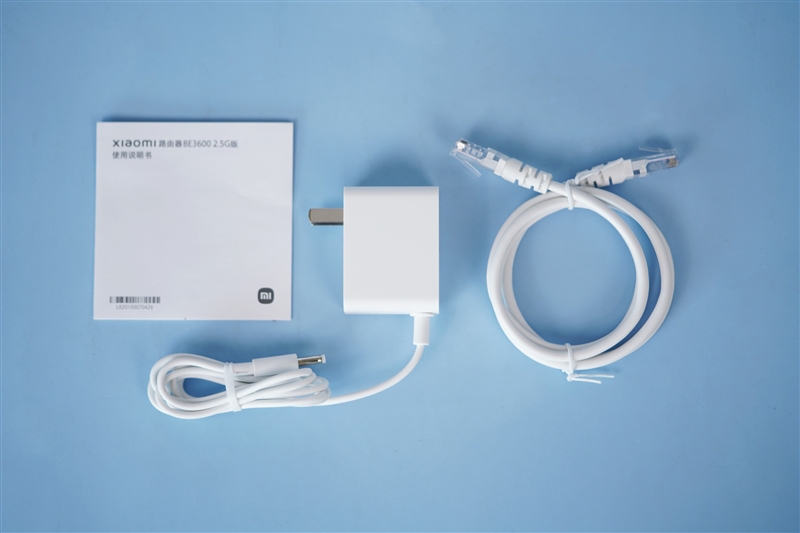
At the bottom, grille openings enhance ventilation. The package includes instructions, a power adapter, and a CAT 5E network cable.
Signal and Coverage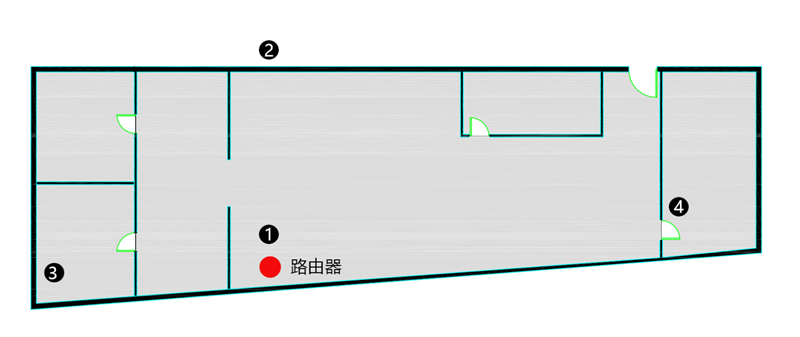
In our testing environment, we’re situated in an office spanning 300 to 400 square meters. The red dot marks the routing location, while the black dot with numbers represents the test site.
To ensure maximum wireless transmission speed, we utilize a 2.5G wired connection for the testing PC and a Xiaomi 14 mobile phone supporting Wi-Fi 7. Throughout the process, we perform signal strength and transmission rate tests.
For an optimal experience with a Wi-Fi 7 router, it’s crucial to activate the multi-band function. Without it, you won’t access the MLO multi-link aggregation technology, a Wi-Fi 7 exclusive, enhancing throughput, mitigating interference, and reducing latency by combining channels.
Upon connecting Xiaomi 14 to the Wi-Fi hotspot of Xiaomi router BE3600, it automatically links to the 5G band when the frequencies merge. As per the technical standard, denoting the seventh generation, the maximum connection rate hits 2882Mbps.
Test point 1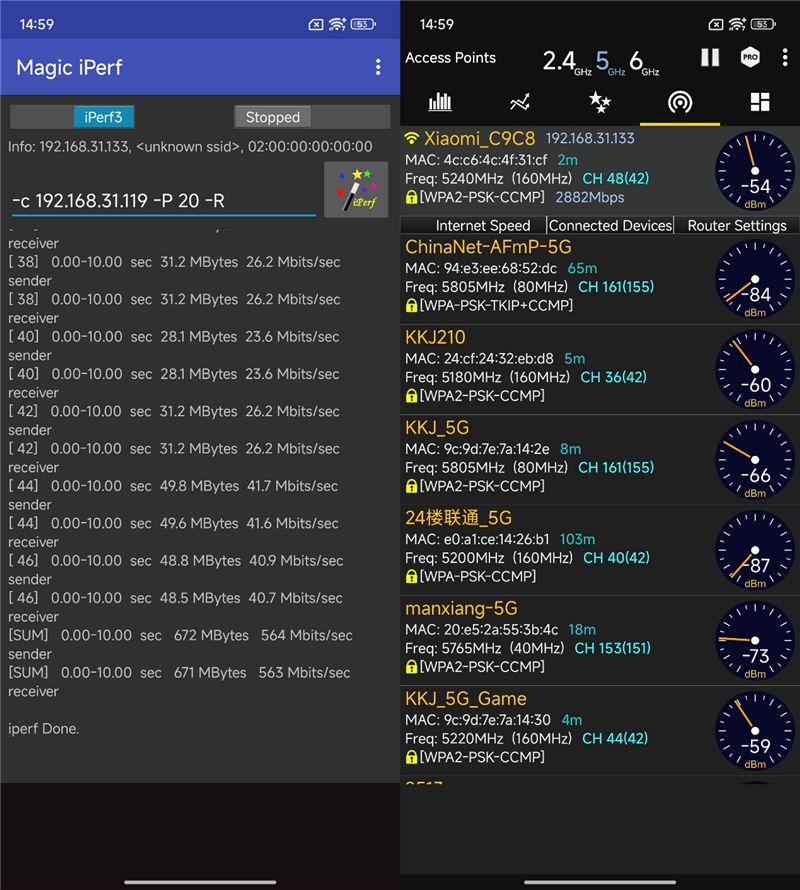
At this location, free from obstructions, the mobile phone achieves a connection rate of 2882Mbps with a signal strength of -10dBm. Within 10 seconds, the phone receives 1.67GB of data, reaching a maximum transmission speed of 1.44 Gbps.
Test point 2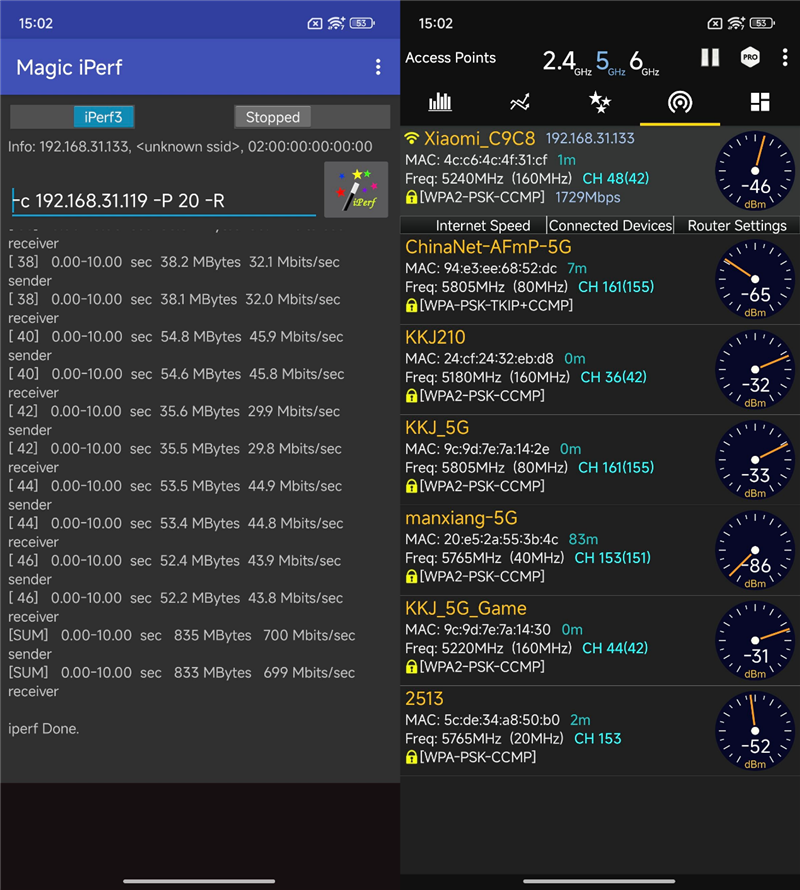
At the second test point, separated by a wall, the mobile phone maintains a link rate of 2882Mbps, and the signal strength reads -46dB. In 10 seconds, the phone receives 961GB of data, hitting a maximum transfer speed of 806Mbps.
Test point 3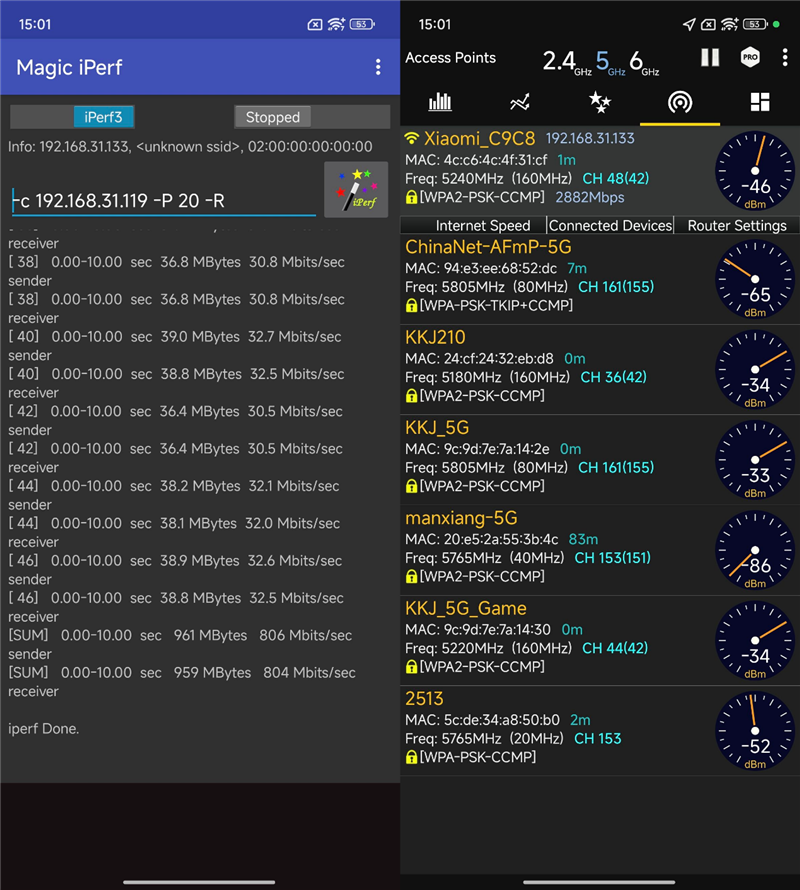
Moving to test point 3, separated by two walls, the mobile phone’s connection rate drops to 1729Mbps with a signal strength of -46dB. Within 10 seconds, the phone receives 835GB of data, achieving a maximum transmission speed of 700Gbps.
Test point 4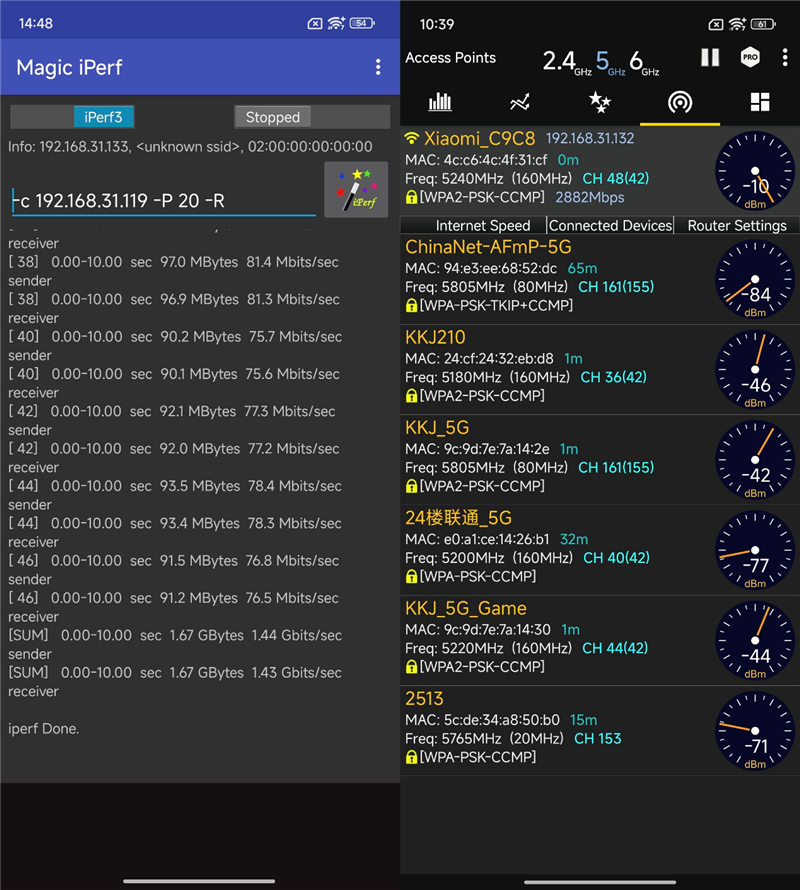
Returning to test point 3, where a wall is present but the distance is around 15-20 meters, the mobile phone maintains a connection rate of 2882Mbps and a signal strength of -54dB. In 10 seconds, the phone receives 672GB of data, with a maximum transfer speed of 564Gbps.
The Xiaomi router BE3600 effectively covers our office space of 300 to 400 square meters. In unobstructed conditions, its performance rivals mid-to-high-end routers, easily reaching a rate of 1.43Gbps.
Normal signal strength falls between -40dBm and -85dBm. If it drops below -90dBm, users might encounter issues like lagging, loading failures, and interruptions.
Even at the farthest distance, the Xiaomi router BE3600 maintains a -54dB signal strength and a 564Mbps connection rate, ensuring smooth 4K video streaming and gaming.
Separated by two walls, its rate may decrease to -46dBm and 700Mbps, but the impact is manageable, providing a reliable experience.
Verdict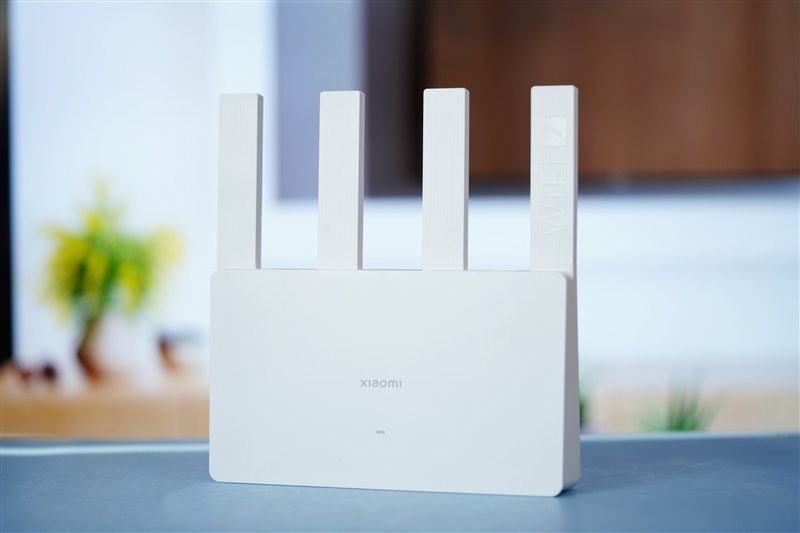
Firstly, as an entry-level router, Xiaomi Router BE3600 outperforms higher-priced Wi-Fi 6 routers. Despite some trade-offs in workmanship and price, user experience remains solid. Wall penetration and transmission capabilities meet expectations.
Moreover, within the same price range, achieving a wireless speed of 3600Mbps is common, but finding a product with a 2.5G wired network port is rare.
The BE3600 provides everything it can offer. With gigabit broadband popularity rising, achieving its full potential typically requires mid-to-high-end Wi-Fi 6 routers, often at a higher cost. However, the Xiaomi router BE3600, at just 249 yuan, emerges as the optimal choice.
Positioned as an entry-level router for Wi-Fi 7, it rivals the performance of mid-to-high-end Wi-Fi 6 routers.
Despite being entry-level, the Xiaomi Router BE3600 boasts specifications like the Qualcomm IPQ5312 quad-core A53 architecture processor, matching the BE6500 Pro. With only 256MB of memory, it handles 128 devices online simultaneously without a hitch.
Highlighting the Wi-Fi 7 router experience is the MLO multi-link aggregation technology. Enabled by this feature, the BE3600 achieves an impressive 1.43Gbps for intranet transmission, comparable to mid-to-high-end Wi-Fi 6 routers.
Retaining essential features such as dual-bandwidth access, dual LAN aggregation, custom IPTV, and e-sports network ports, it ensures a seamless experience during gaming, live broadcasts, and video calls, even with multiple users.
This router proves ideal for Mijia devices, facilitating one-click intelligent network distribution and enabling IoT intelligent linkage. Additional features like password-free network access and password change synchronization enhance peace of mind and user experience.
In conclusion, while the Xiaomi router BE3600 may not match mid-to-high-end Wi-Fi 7 routers in specifications and extreme conditions, its appearance lowers the entry barrier for users to experience Wi-Fi 7. At 249 yuan, it’s likely the first choice when seeking the most cost-effective Wi-Fi 7 router.
Read Also: Xiaomi Redmi AX6000 WiFi 6 Router Review: Unleash the Power of Mesh Networking










